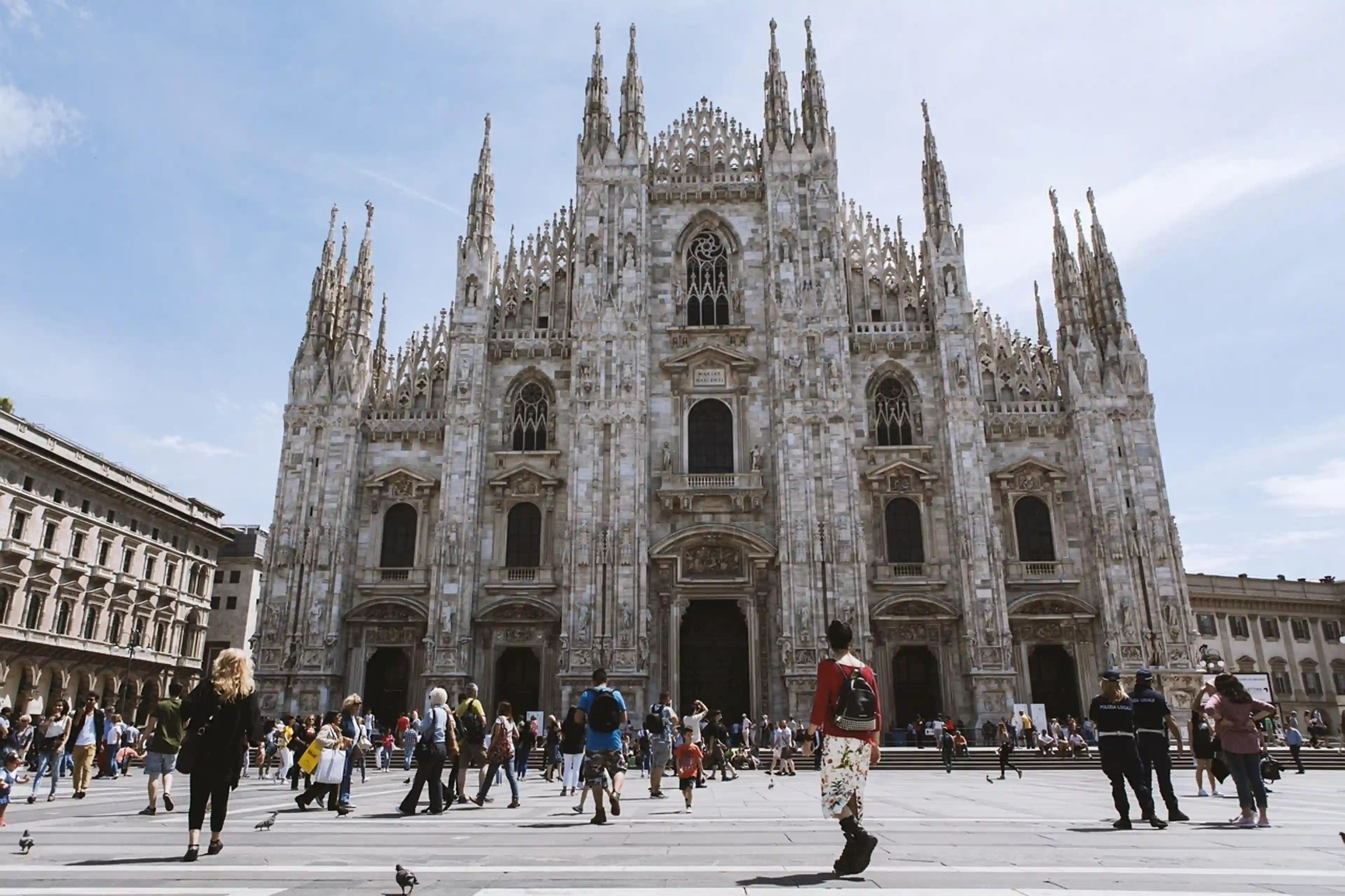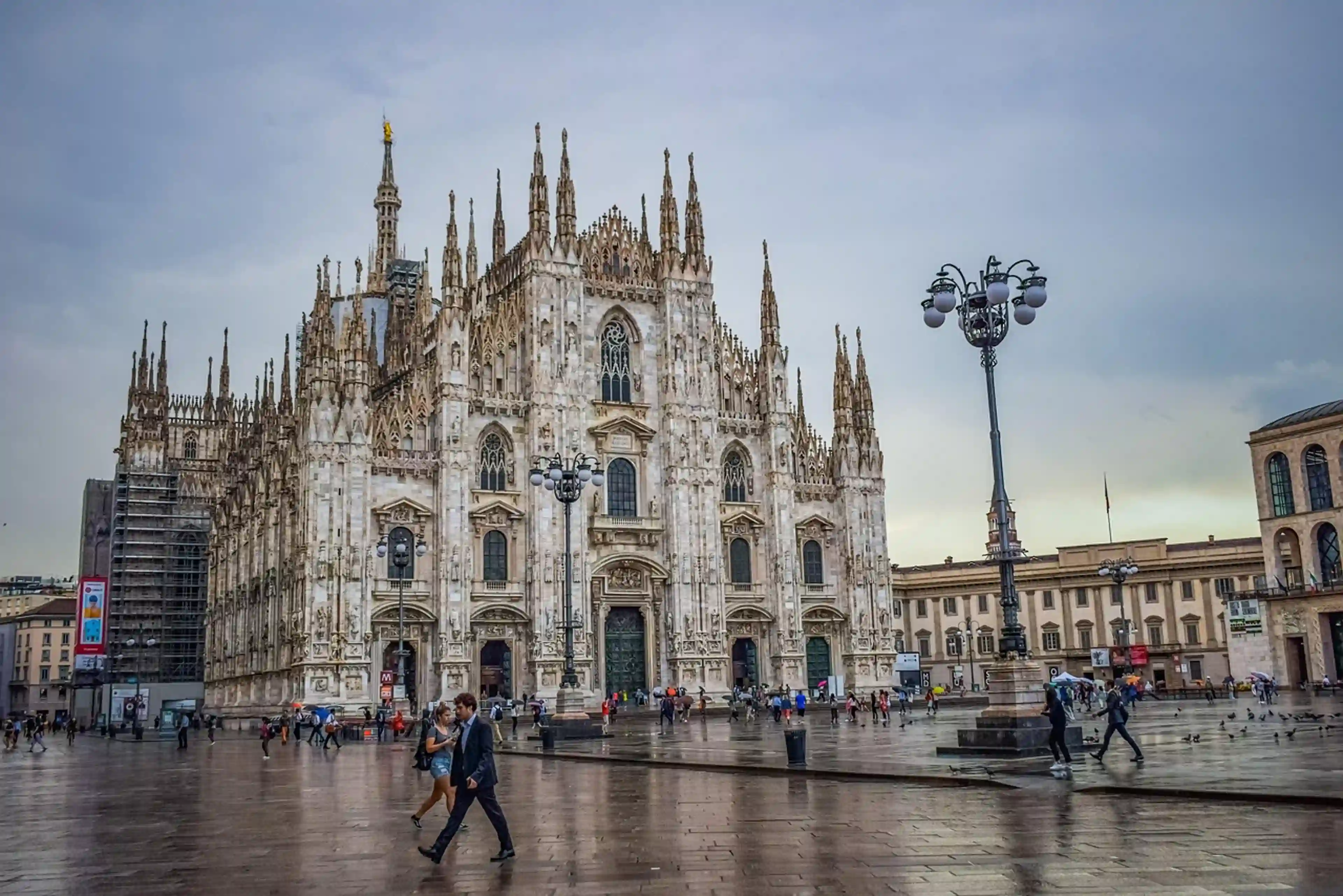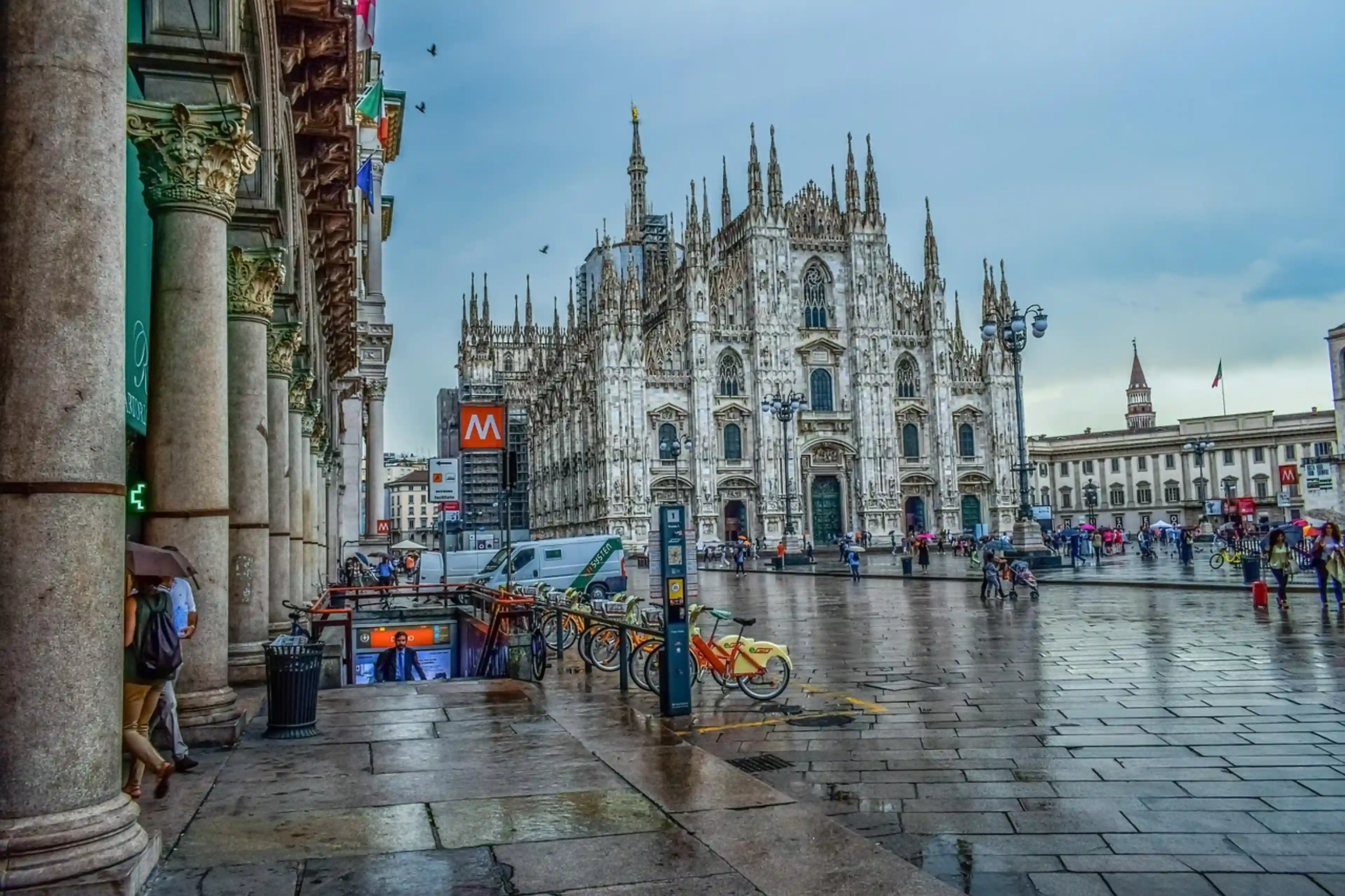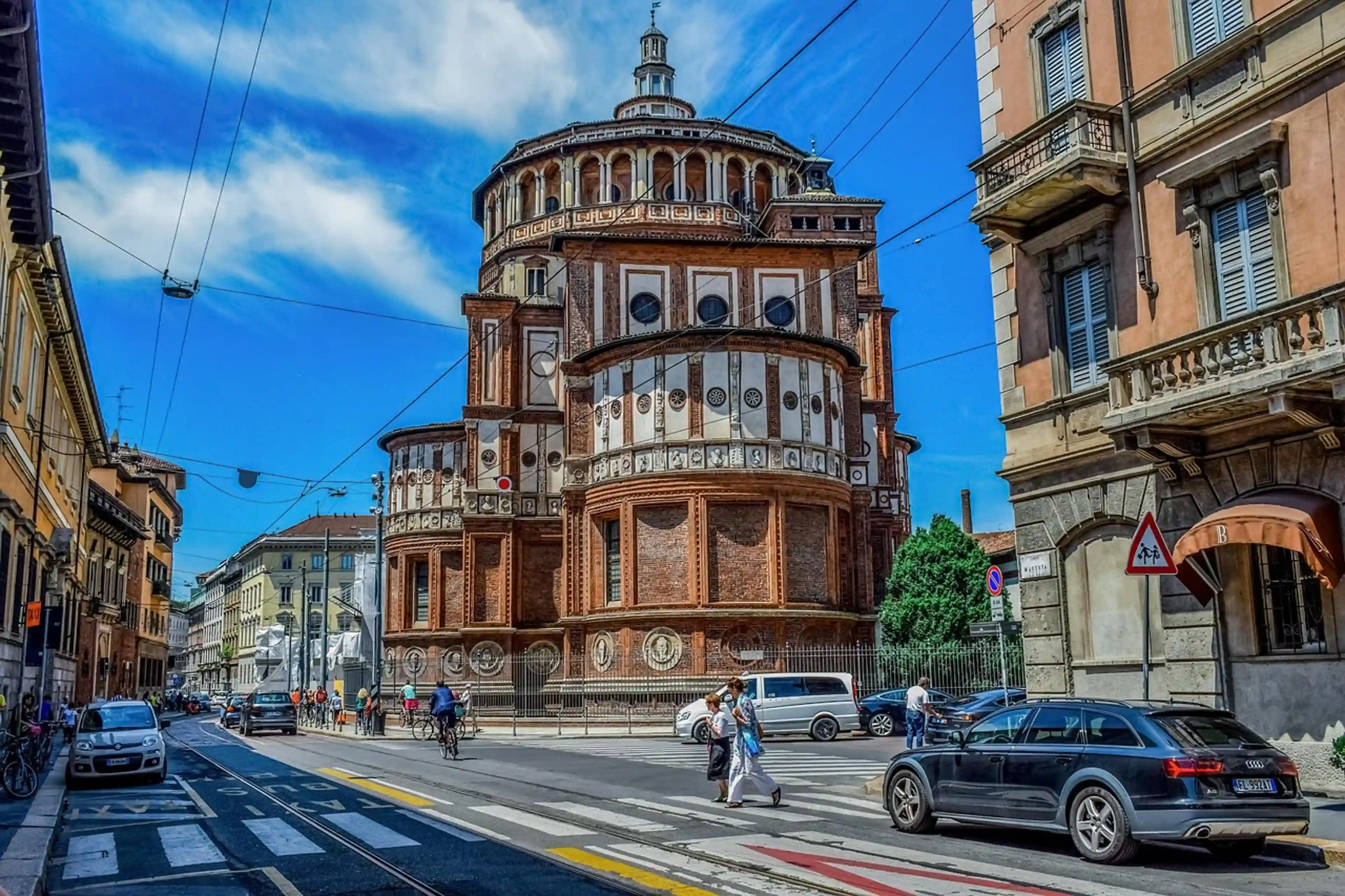Milan
General presentation
Top 50
History, culture & traditions
Travel advice
Wikipedia
Viator activities
Tiqets activities
Global presentation
The second largest city in Italy after Rome, this Lombard metropolis asserts itself as the true economic and financial center of the country. An undisputed global capital of fashion and design, it attracts nearly two million visitors each year who come to discover its architectural and cultural treasures. The majestic Duomo with its flamboyant Gothic façade, the elegant Galleria Vittorio Emanuele II, and the prestigious Teatro alla Scala are among its most emblematic monuments. The city also vibrates with the rhythm of football through its two legendary clubs, AC Milan and Inter Milan, which elevate its name worldwide.
Geographical situation
Nestled in the heart of the Po Valley in northern Italy, this metropolis occupies an exceptional strategic position as the capital of the Lombardy region. Its territory is crisscrossed by several historic waterways and canals, including the Naviglio Grande and the Naviglio Pavese, testifying to its rich commercial past. The proximity of the Alps provides a remarkable natural setting, while its privileged location - about 50 km from Ticino, 25 km from Adda, 35 km from Po, and 40 km from Lake Como and the Swiss border - makes it an ideal crossroads between Italy and Northern Europe.
Atmosphere and character
The atmosphere prevailing in this metropolis perfectly reflects its dual nature: a city deeply rooted in its Italian traditions while being resolutely forward-looking. Its cultural effervescence manifests particularly in the fields of fashion, design, and music, creating a unique energy that captivates visitors from around the world. The bohemian neighborhoods of Brera and Navigli reveal a more artistic side with their art galleries, creative boutiques, and lively cafes. This intensity extends into the night, offering a dynamic nightlife punctuated by prestigious international events.
Climate
The humid subtropical climate characterizes this destination, with marked seasonal variations that influence the visitor experience. Summers are hot and humid, with temperatures ranging from 15°C to 29°C, while winters are more rigorous, sometimes snowy, with values between -1°C and 6°C. A particular phenomenon worth mentioning is the frequent presence of fog between October and February, giving the city a mysterious atmosphere during these months. Precipitation is harmoniously distributed throughout the year, marked by refreshing summer storms and autumn Mediterranean disturbances.
Best season to visit
Spring and autumn offer the most favorable conditions to discover this destination, thanks to mild temperatures and generally stable weather. It is advisable to avoid the summer period due to high temperatures and the phenomenon of traditional summer closures in August, which can limit the accessibility of certain sites. Special attention should be paid to the schedules of fashion weeks and major trade fairs, periods during which accommodation rates experience substantial increases.
Access
Three airports serve this metropolis, offering excellent international connectivity:
- Malpensa (MXP): the main international hub, located in the province of Varese
- Linate (LIN): close to the city center, favored for domestic and European connections
- Bergamo (BGY): specializing in low-cost flights, located in Bergamo
The rail network provides a particularly effective alternative with major stations such as Centrale and Porta Garibaldi. High-speed connections allow quick access to Turin, Florence, Rome, and Naples, positioning the city as a true national and international railway hub.
Internal transport
The remarkably developed public transport network facilitates all urban travel:
- Metro: five lines (M1 to M5) efficiently covering the city and its periphery
- Trams: one of the most extensive networks worldwide with about 170 km of tracks
- Buses: multiple lines covering the entire urban and suburban territory
- Self-service bikes: the "BikeMi" system offers about 3,650 bikes spread across 280 stations
Taxi and ridesharing services complement this mobility offering, ensuring optimal accessibility to all neighborhoods and attractions in the metropolis.
Top 50
Wikipedia
Viator activities
Tiqets activities



